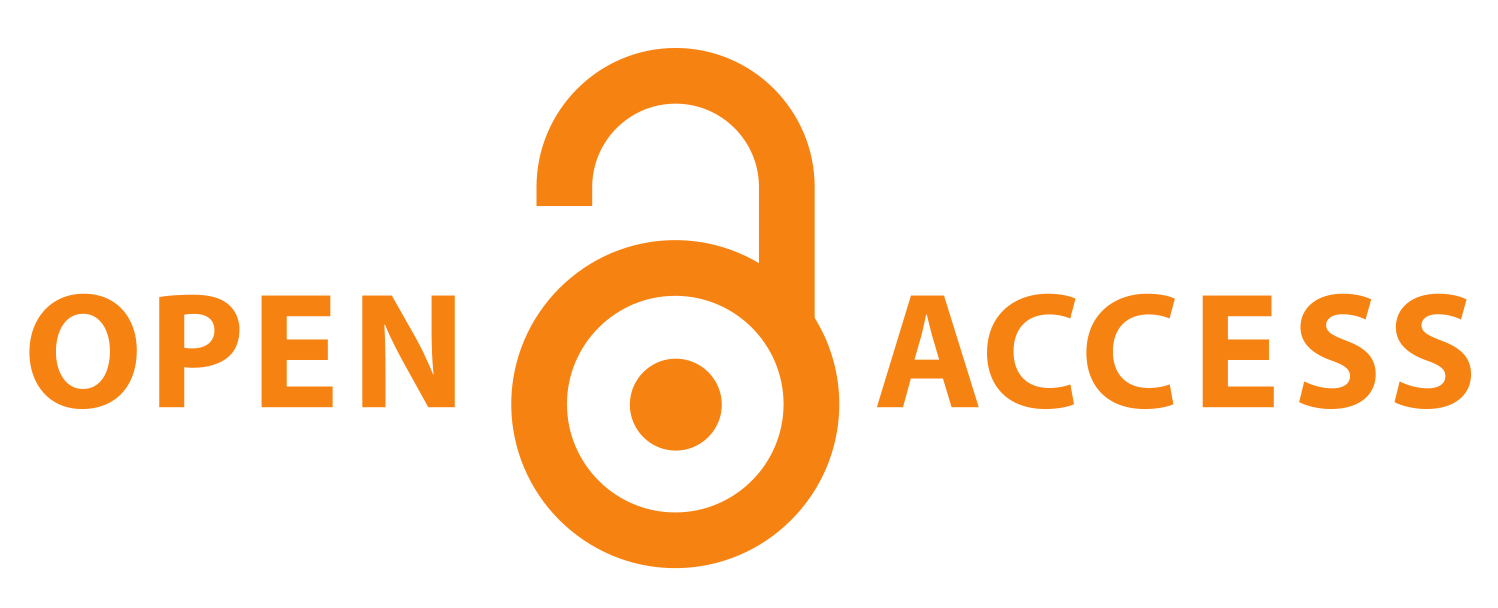An Investigation into the Effect of Using Duolingo to Enhance Students’ Vocabulary
DOI:
https://doi.org/10.54855/acoj.251621Keywords:
Duolingo, EFL, Vocabulary, StudentsAbstract
This study aims to investigate the effect of using Duolingo to enhance students’ English vocabulary. It focused on students in Hanoi who learn English as a second language. The researcher adopted a mixed method. For data collection, a questionnaire was administered to 163 students in Hanoi, and then the researcher conducted semi-structured interviews with 6 of them who learned English with Duolingo. Concerning data analysis, the computer program Statistical Package for Social Sciences (SPSS) is used to analyze the numerical data, and the interview results are used to support the analysis process. Overall, the study results illustrated that Hanoi students have positive attitudes toward using Duolingo to learn vocabulary. This indicates that the hypotheses of this study were accepted, suggesting that the Duolingo application can be utilized to enhance students' vocabulary. Despite several advantages such as progress tracking and interactive exercises, this application has some disadvantages that unsatisfied users’ learning process, including the lack of depth and contextualization in certain vocabulary areas, and limited customization options. As a result, the researcher suggests that English teachers integrate the Duolingo application into the Teaching-learning process as it makes English learning more enjoyable and interesting. Moreover, Duolingo’s designers should add more specialized vocabulary and offer customization options to broaden students’ experiences.
References
Ahmadi, D. M. R. (2018). The use of technology in English language learning: A literature review. International journal of research in English education, 3(2), 115-125. DOI: https://doi.org/10.29252/ijree.3.2.115
Ajisoko, P. (2020, April 8). The Use of Duolingo Apps to Improve English Vocabulary Learning. Learning & Technology Library (LearnTechLib). https://www.learntechlib.org/p/217084/ DOI: https://doi.org/10.3991/ijet.v15i07.13229
Alemi, M., & Tayebi, A. (2011). The Influence of Incidental and Intentional Vocabulary Acquisition and Vocabulary Strategy Use on Learning L2 Vocabularies. Journal of Language Teaching and Research, 2(1), 81-98. https://doi.org/10.4304/jltr.2.1.81-98 DOI: https://doi.org/10.4304/jltr.2.1.81-98
Amin, S. N. (2021). Gamification of Duolingo in Rising Student’s English Language Learning Motivation. Lingua Scientia Jurnal Bahasa, 13(2), 191–213. https://doi.org/10.21274/ls.2021.13.2.191-213 DOI: https://doi.org/10.21274/ls.2021.13.2.191-213
Brown, G. and Yule,G. (1983), Discourse analysis. Cambridge: Cambridge University Press, 1983. Pp. xii + 288. - M. Stubbs, Discourse analysis. Oxford: Basil Blackwell, 1983. Pp. xiv + 272. Journal of Linguistics, 21(1), 241–245. https://doi.org/10.1017/s0022226700010161 DOI: https://doi.org/10.1017/S0022226700010161
Chik, A. (2015). Recreational language learning and digital practices: Positioning and repositioning. In Discourse and Digital Practices (pp. 112-129). Routledge. DOI: https://doi.org/10.4324/9781315726465-8
de Castro, A. P., da Hora Macedo, S., & Pinto Bastos, H. P. (2016). Duolingo: An Experience in English Teaching. Journal of Educational & Instructional Studies in the World, 6(4), 59.
Decarrico, J.S., 2001. Vocabulary learning and teaching. Teaching English as a second or foreign language, 3, 285-299.
Diamond, L., & Gutlohn, L. (2006). Teaching vocabulary. Retrieved from the Reading Rockets website: http://www. readingrockets. org/article/teaching-vocabulary.
Duolingo Help Center (2022) What is Duolingo?, About Duolingo. Available at: https://support.duolingo.com/hc/en-us/articles/204829090-What-is-Duolingo (Accessed: 12 June 2024).
Fatima, B., & Khan, I. A. (2017). Crucial importance of vocabulary in the process of second language learning: an exploratory study. European Journal of Education Studies, 3(6), 501-517. https://oapub.org/edu/index.php/ejes/article/view/767
Finardi, K. R., Leão, R. G., & Amorim, G. B. (2016). Mobile assisted language learning: Affordances and limitations of Duolingo. Education and Linguistics Research, 2(2), 48-65. DOI: https://doi.org/10.5296/elr.v2i2.9842
Flores, J. F. F. (2015). Using gamification to enhance second language learning. Digital Education Review, (27), 32-54.
Glowacki, D., Lanucha, C., & Pietrus, D. (2001). Improving Vocabulary Acquisition through Direct and Indirect Teaching (Master’s research project). ERIC. https://eric.ed.gov/?id=ED453542.
Hatch, E., & Brown, C. (1995). Vocabulary, semantics, and language education. Cambridge University Press, 40 West 20th Street, New York, NY 10011-4211 (hardback: ISBN-0-521-47409-4; paperback: ISBN-0-521-47942-8)..
Hernadijaya, N. S. (2020). The use of duolingo application to enhance junior high school student’s English vocabulary. RETAIN, 8(2), 17-24.
Ho, V. (2020). Localization in educational mobile games: Multiple case studies of educational mobile games in the emerging market, Vietnam (Master’s thesis, Aalto University School of Business, Finland). Aalto University. https://urn.fi/URN:NBN:fi:aalto-202005243194
Huong, P. T. T., & Long, N. V. (2018). How effective are EFL software programs for English learning in Vietnamese higher education context. In proceeding: 2nd International Conference on Social Sciences, Humanities, and Technology (ICSHT 2018). Global Academic Excellence (M) Sdn. Bhd (pp. 248-255).
Inayah, N., Yusuf, Q., & Fibula, N. (2020). Exploring undergraduate students’ perception toward the use of Duolingo in learning English. Humanities & Social Sciences Reviews, 8(3), 76-85. https://doi.org/10.18510/hssr.2020.839 DOI: https://doi.org/10.18510/hssr.2020.839
Jašková, J. (2014). Duolingo as a new language-learning website and its contribution to e-learning education (Doctoral dissertation, Masarykova univerzita, Pedagogická fakulta).
Jiang, X., Rollinson, J., Chen, H., Reuveni, B., Gustafson, E., Plonsky, L., & Pajak, B. (2021). How well does Duolingo teach speaking skills. Amazonaws. com. Northern Arizona Univ.[Online]. Available: https://duolingo-papers. s3. amazonaws. com/reports/duolingo-speakingwhitepaper. pdf.
Kacetl, J., & Klímová, B. (2019). Use of smartphone applications in English language learning—A challenge for foreign language education. Education Sciences, 9(3), 179. DOI: https://doi.org/10.3390/educsci9030179
Souiki, K. (2022). An investigation into the effect of using Duolingo application to enhance students’ vocabulary (Master's thesis, Mohamed Khider University of Biskra). http://archives.univ-biskra.dz/bitstream/123456789/27104/1/SOUIKI_KHOULOD.pdf
Laufer, B. (1997). What's in a word that makes it hard or easy? Some intralexical factors that affect the learning of words. In N. Schmitt & M. McCarthy (Eds.), Vocabulary: Description, Acquisition and Pedagogy (pp. 140–155). Cambridge University Press.
Laufer, B. (2005). Focus on form in second language vocabulary learning. EUROSLA Yearbook, 5(1), 223-250. https://doi.org/10.1075/eurosla.5.11lau DOI: https://doi.org/10.1075/eurosla.5.11lau
Liang, L. (2018). Exploring language learning with mobile technology: A qualitative content analysis of vocabulary learning apps for ESL learners in Canada (Master's thesis, The University of Western Ontario (Canada)).
Masrai, A. (2019). Vocabulary and reading comprehension revisited: Evidence for high-, mid, and low-frequency vocabulary knowledge. Sage Open, 9(2), 1-13. https://doi.org/10.1177/2158244019845182 DOI: https://doi.org/10.1177/2158244019845182
Milyarni, F. D., Mortini, A. V., & Mayasari, S. (2021). Translation Exercises of English To Indonesian in Duolingo Application. The Journal of English Literacy Education: The Teaching and Learning of English as a Foreign Language, 8(2), 150-163. DOI: https://doi.org/10.36706/jele.v8i2.15531
Munday, P. (2016). The case for using DUOLINGO as part of the language classroom experience (Duolingo como parte del curriculum de las clases de lengua extranjera). DOI: https://doi.org/10.5944/ried.19.1.14581
Nagy, W. E., Herman, P. A., & Anderson, R. C. (1985). Learning words from context. Reading research quarterly, 20(2), 233-253. DOI: https://doi.org/10.2307/747758
Nagy, W., & Townsend, D. (2012). Words as tools: Learning academic vocabulary as language acquisition. Reading research quarterly, 47(1), 91-108. DOI: https://doi.org/10.1002/RRQ.011
Nation, I. S. P. (2001). Learning vocabulary in another language. Cambridge University Press. https://doi.org/10.1017/CBO9781139524759 DOI: https://doi.org/10.1017/CBO9781139524759
Nemoto, T., & Beglar, D. (2014, November). Likert-scale questionnaires. In JALT 2013 conference proceedings (Vol. 108, No. 1, pp. 1-6).
Neuman, S. B., & Dwyer, J. (2009). Missing in action: Vocabulary instruction in pre‐K. The reading teacher, 62(5), 384-392. DOI: https://doi.org/10.1598/RT.62.5.2
Nghi, T. T., & Thang, N. T. (2024). Challenges and Drawbacks of Smartphone-Based Language Learning for Vietnamese EFL Learners in Higher Education Settings: Perspectives on Mobile Apps and Curriculum Design. Journal of Language Teaching and Research, 15(2), 428-435. DOI: https://doi.org/10.17507/jltr.1502.11
Nguyen, H. A. (2024). Harnessing AI-based tools for enhancing English speaking proficiency: Impacts, challenges, and long-term engagement. International Journal of AI in Language Education, 1(2), 18–29. https://doi.org/10.54855/ijaile.24122 DOI: https://doi.org/10.54855/ijaile.24122
Nguyen, T. N. Q., & Vo, N. T. T. (2021). The need of applying English learning apps to help Van Lang University students improve their spoken English performance. AsiaCALL Online Journal, 12(2), 72-86.
Nushi, M., & Eqbali, M. H. (2017). Duolingo: A Mobile Application to Assist Second Language Learning. Teaching English with Technology, 17(1), 89-98.
Putri, L. M., & Islamiati, A. (2018). Teaching listening using Duolingo application. Journal of English Education, 1(4), 460. DOI: https://doi.org/10.22460/project.v1i4.p460-465
Roche, T., & Harrington, M. (2013). Recognition vocabulary knowledge as a predictor of academic performance in an English as a foreign language setting. Language Testing in Asia, 3, 1-13. DOI: https://doi.org/10.1186/2229-0443-3-12
Schmitt, N., & Schmitt, D. (2014). A reassessment of frequency and vocabulary size in L2 vocabulary teaching1. Language Teaching, 47(4), 484-503. DOI: https://doi.org/10.1017/S0261444812000018
Stahl, S. A., & Nagy, W. E. (2007). Teaching Word Meanings. In Routledge eBooks. https://doi.org/10.4324/9781410615381 DOI: https://doi.org/10.4324/9781410615381
Townsend, D., Filippini, A., Collins, P., & Biancarosa, G. (2012). Evidence for the importance of academic word knowledge for the academic achievement of diverse middle school students. The Elementary School Journal, 112(3), 497-518. DOI: https://doi.org/10.1086/663301
Tran, K. Q. (2024). The effects of integrating artificial intelligence into learning academic vocabulary among master’s in English studies students. International Journal of AI in Language Education, 1(1), 1–19. https://doi.org/10.54855/ijaile.24111 DOI: https://doi.org/10.54855/ijaile.24111
Vesselinov, R., & Grego, J. (2012). Duolingo effectiveness study. City University of New York, USA, 28(1-25).
Ward, N. (1988). Issues in word choice. In Coling Budapest 1988 Volume 2: International Conference on Computational Linguistics. DOI: https://doi.org/10.3115/991719.991785
Wilbert, J. K. W., WANG, Y., HE, M., LI, L., Wang, D., Li, X., ... & Torraco, R. J. (2016). Duolingo as a Bilingual Learning App: a Case Study. Journal of Knowledge Management, 2(2), 1-18.
Zhang, R., & Zou, D. (2022). Types, purposes, and effectiveness of state-of-the-art technologies for second and foreign language learning. Computer Assisted Language Learning, 35(4), 696-742. https://doi.org/10.1080/09588221.2020.1803367. DOI: https://doi.org/10.1080/09588221.2020.1744666
Downloads
Published
How to Cite
Issue
Section
License
Copyright (c) 2025 Nguyen Thi Quyen

This work is licensed under a Creative Commons Attribution 4.0 International License.
License
Authors retain copyright and grant the journal the right of first publication with the work simultaneously licensed under a Creative Commons Attribution 4.0 International License that allows others to share the work with an acknowledgment of the work's authorship and initial publication in this journal.
Authors are able to enter into separate, additional contractual arrangements for the non-exclusive distribution of the journal's published version of the work (e.g., post it to an institutional repository, in a journal or publish it in a book), with an acknowledgment of its initial publication in this journal.
Authors are permitted and encouraged to post their work online (e.g., in institutional repositories or on their website) prior to and during the submission process.
Copyright
The copyright of all articles published in the acoj remains with the Authors, i.e. Authors retain full ownership of their article. Permitted third-party reuse of the open access articles is defined by the applicable Creative Commons (CC) end-user license which is accepted by the Authors upon submission of their paper. All articles in the acoj are published under the CC BY-NC 4.0 license, meaning that end users can freely share an article (i.e. copy and redistribute the material in any medium or format) and adapt it (i.e. remix, transform and build upon the material) on the condition that proper attribution is given (i.e. appropriate credit, a link to the applicable license and an indication if any changes were made; all in such a way that does not suggest that the licensor endorses the user or the use) and the material is only used for non-commercial purposes.











